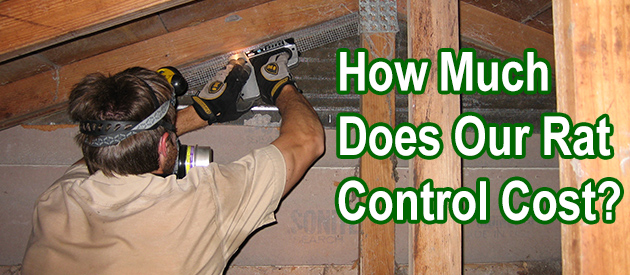Duval County, Jacksonville Rat Control Situation:
Dear sir, I current have something in my attic that I think is a rat or mouse. My pest control company has placed bait for rodents in the attic to no avail. They have also complete an outside "plug the holes treatment. There is a section off my attic that is hard to access due to vaulted ceilings. The noise is in the area that no one can get to. It is mainly in the early morning, no so much at night. Can you recommend someone in the northeast Florida coast area, I am about 17 miles north of Saint Augustine, south of Jacksonville FL. Thank you, Jocelyn
If by "bait", you mean poison, that's not a good idea. You need to find the entry holes and seal them. I do know someone in your area.
Thank you for posting helpful info about rat removal. I was going to have my husband get rat poison. Glad to know that's the wrong way. What is the best bait to use in the wood rat traps? Will peanut butter work? I have no idea what rats will eat.
Peanut butter and seeds should work just fine, but there's a heck of a lot more to rat control than the type of bait used!
Jacksonville Rat Control Tip of The Week
Are Rats Able to Swim, or Do They Drown?
Though rats are not the most desired animals to have around your home, you will be amazed by the incredible survival instincts these rodents have. One of these survival instincts is their ability to survive in water. Rats are excellent swimmers, with their legs, tail, and rhythmic body movements, they can wade in the water for up to three days without drowning
These special skills allow them to be able to survive in water if by circumstance they find themselves stuck in a bucket of water, bathtub, or toilet. In cases where the water body is not restricted by a container or an object, rats use their swimming skills to find their way to dry land close by.
If you happen to find a rat stuck in water, the best thing you can do is to remove it and relocate it somewhere far away from your home or anywhere you are. Refusing to do this and expecting it to drown will only cost you your time because the rat will try as much as possible to survive.
Rats do drown in water, but that will only happen after 3 days when the rat has exhausted all of its energy swimming with no way out. Only a few rodents have this special kind of survival instinct, this clearly shows how smart and intelligent rats are.
Nevertheless, you shouldn't allow rats to run around your house and make your home their nesting place. If you find rats in the water around your home, you need to get them removed and relocated somewhere safe and far from your home to prevent further reentry. Rats are a menace to your health, so you need to look for the best way to get rid of them quickly.


